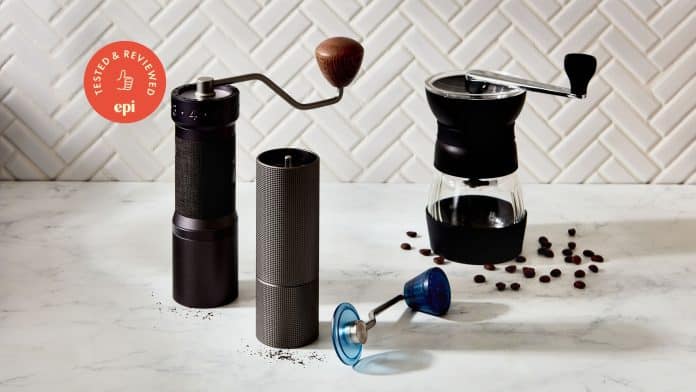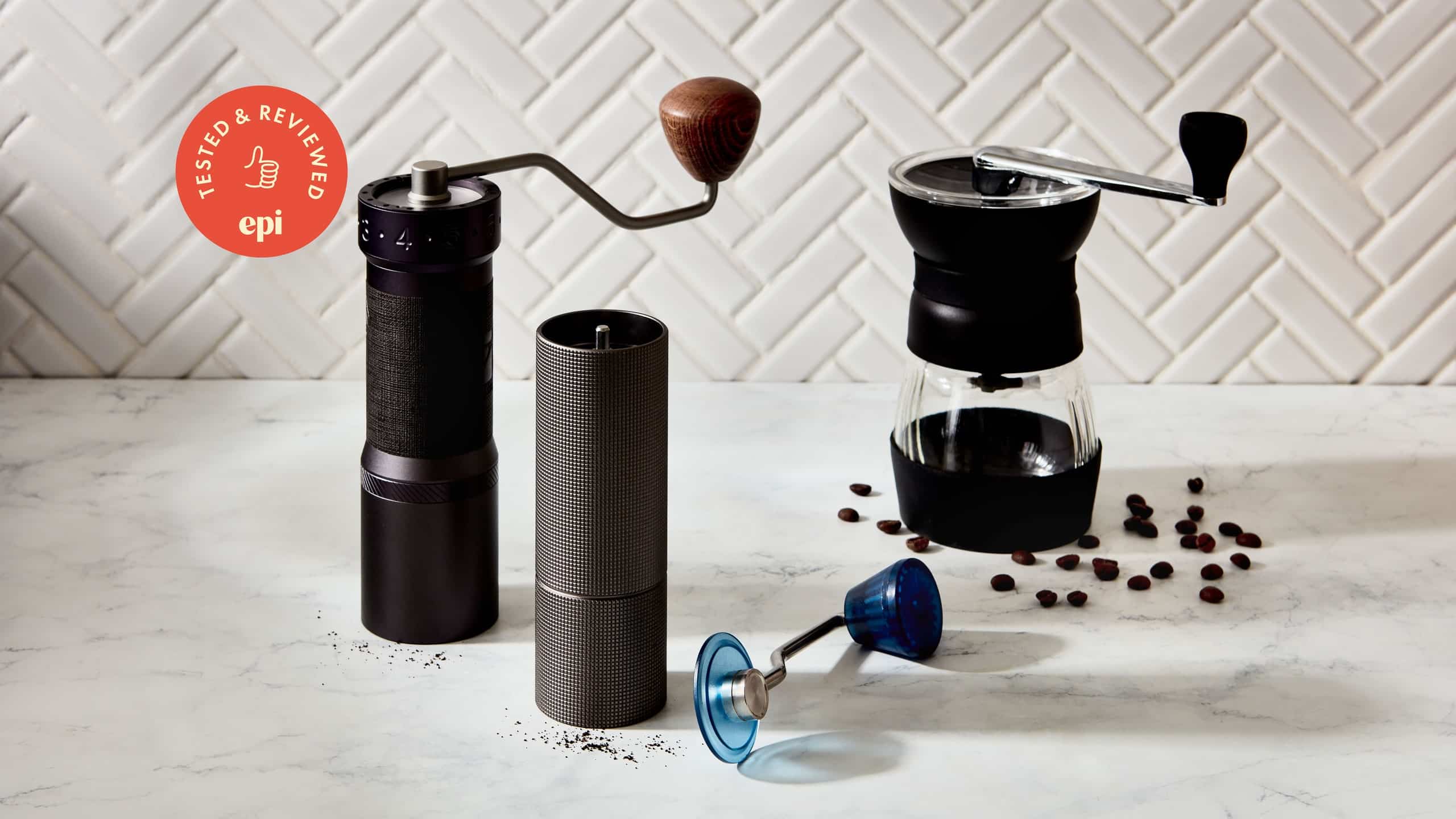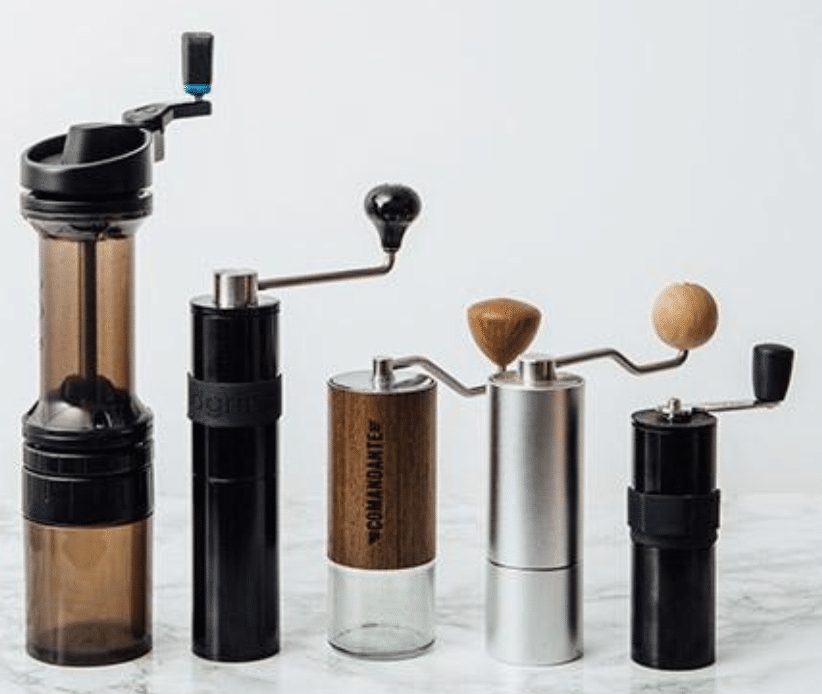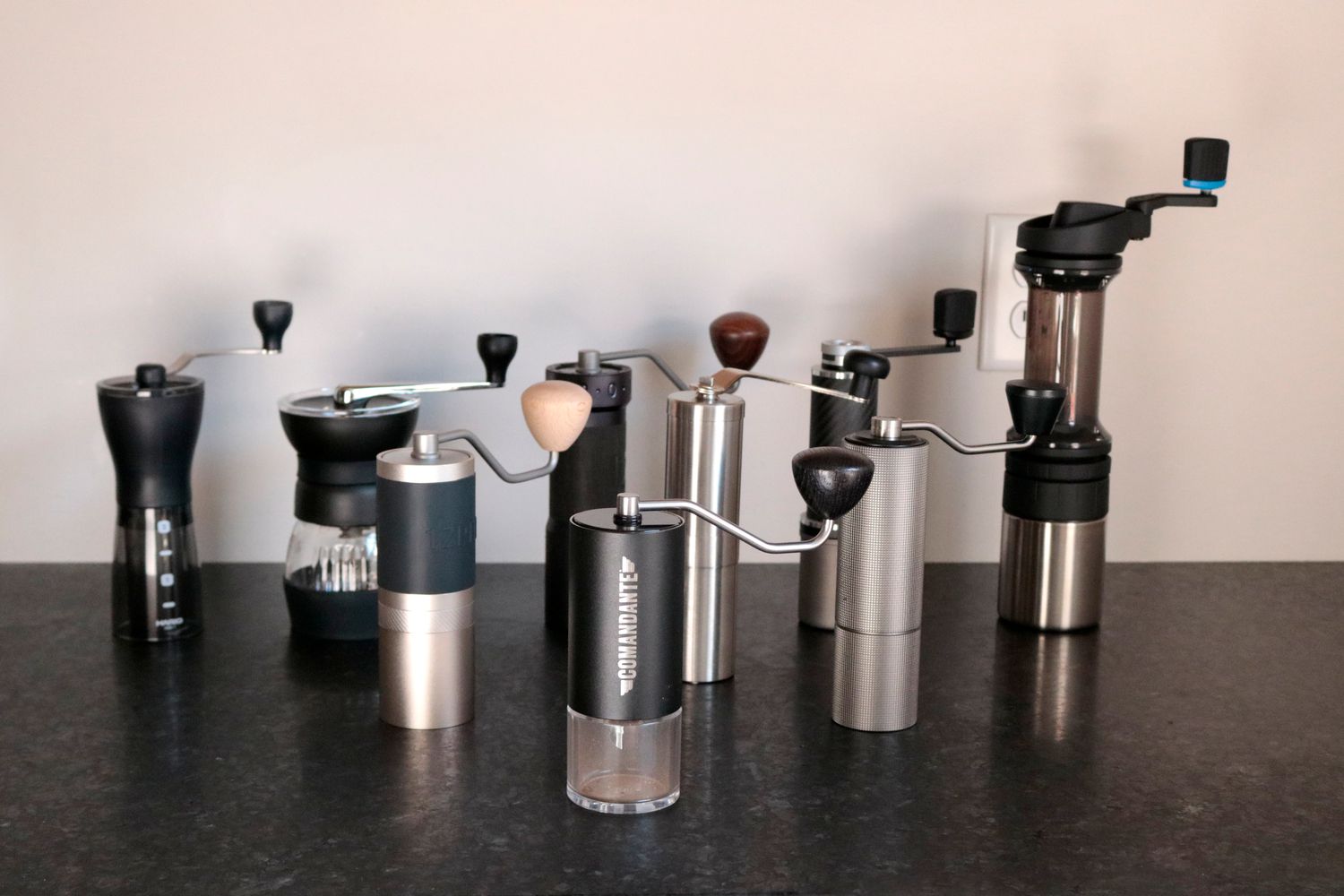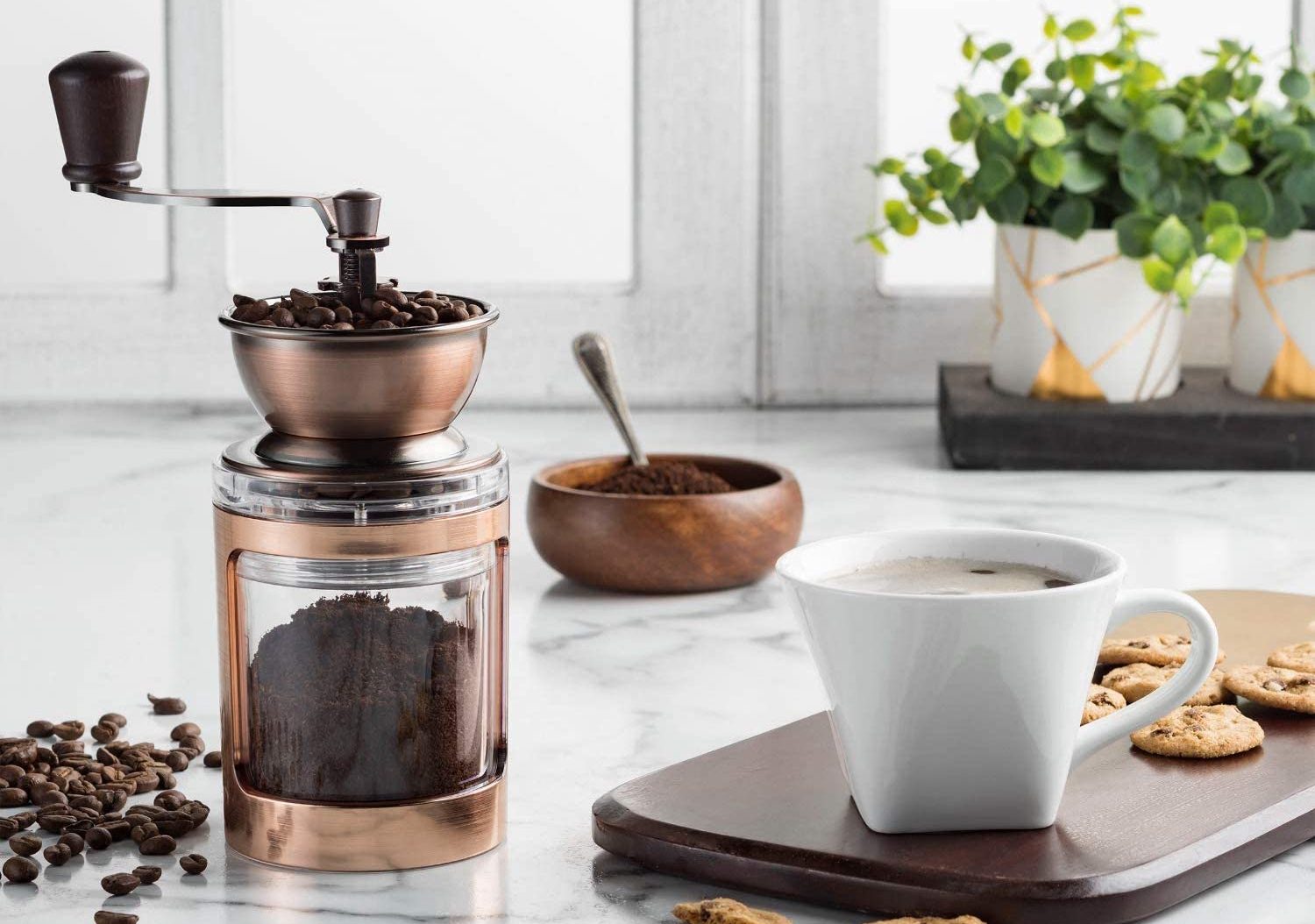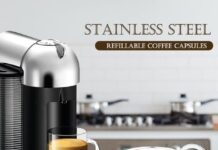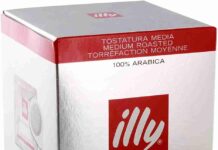If you’re a coffee enthusiast like us, you probably know the joy of brewing your own cup of java at home. And what better way to achieve that perfect grind than with a manual coffee grinder? But with so many options on the market, it can be overwhelming to figure out which one is truly worth investing in. Well, fear not! In this article, we’ll guide you through the process of choosing a good manual coffee grinder, so you can enjoy a consistently delicious cup of coffee every morning.
Type of Grinder
Burr Grinders
When it comes to manual coffee grinders, the type of grinder you choose can greatly affect the quality of your coffee. Burr grinders are widely considered the best option for achieving a consistent grind size. They work by crushing the coffee beans between two burrs, resulting in a uniform grind. This consistency is key in extracting the best flavors from your coffee beans. Burr grinders also offer better control over the grind size, allowing you to adjust it to suit your brewing method.
Blade Grinders
Blade grinders, on the other hand, use a spinning blade to chop the coffee beans into smaller pieces. While they are generally less expensive than burr grinders, they often produce an uneven grind size. This inconsistency can lead to over-extraction or under-extraction, resulting in a subpar cup of coffee. However, blade grinders can be a suitable option for those on a tight budget or looking for a grinder for occasional use.
Conical Grinders
Conical grinders are a popular choice among coffee enthusiasts for their ability to produce a consistent grind size similar to burr grinders. They feature a conical burr that spins against another stationary burr, ensuring a uniform grind. Conical grinders are known for their efficient grinding performance and are often favored by those who prioritize flavor and aroma in their coffee.
Grinding Performance
Consistency
Consistency is crucial when it comes to grinding coffee beans, as it directly affects the extraction process and the taste of your coffee. Burr grinders, both flat and conical, excel in this aspect, providing a consistent grind size that allows for even extraction. Blade grinders, on the other hand, are more prone to producing an uneven grind, which can lead to variations in flavor and strength.
Grind Size Adjustability
The ability to adjust the grind size is essential for achieving the desired flavor profile in your coffee. Burr grinders offer a wide range of grind size options, allowing you to finely tune the grind for different brewing methods. Blade grinders, on the other hand, usually lack precision in grind size adjustment, limiting their versatility.
Speed
The speed at which a grinder operates can affect the quality of the grind. While blade grinders tend to be faster, they generate heat, which can negatively impact the taste of the coffee. Burr grinders, on the other hand, operate at a slower speed, reducing the heat produced and helping to preserve the delicate flavors of the beans.
This image is property of assets.epicurious.com.
Construction Materials
Stainless Steel
Stainless steel is a common material used in manual coffee grinders due to its durability and resistance to corrosion. It is a popular choice among coffee enthusiasts for its ability to maintain the quality of the grind over time. Stainless steel grinders are often preferred for their longevity and sturdiness, making them a reliable option for daily use.
Ceramic
Ceramic is another material commonly used in manual coffee grinders. It is known for its excellent heat resistance, which prevents the coffee beans from being exposed to excessive heat during the grinding process. Ceramic burrs are also praised for their sharpness, resulting in a precise and consistent grind. However, ceramic grinders can be more fragile compared to stainless steel ones, requiring careful handling and storage.
Plastic
Plastic is often used in the construction of less expensive manual coffee grinders. While it may not offer the same level of durability as stainless steel or ceramic, plastic grinders can still provide a satisfactory grinding experience for occasional use. They are lightweight and portable, making them a popular choice for travelers or those with limited storage space.
Grinding Capacity
Bean Hopper Capacity
The bean hopper capacity refers to the amount of coffee beans that can be loaded into the grinder at once. A larger bean hopper capacity is beneficial for those who brew multiple cups of coffee throughout the day or for those who prefer to have a convenient supply of pre-ground coffee readily available. However, it is important to consider that larger bean hoppers can affect the overall size and portability of the grinder.
Grounds Container Capacity
The grounds container capacity refers to the amount of ground coffee that can be collected in the container. A larger capacity is advantageous if you frequently brew larger batches of coffee or if you prefer to grind a significant amount of coffee in one sitting. However, it is important to note that a larger grounds container can also impact the overall size and portability of the grinder.
This image is property of coffeeblog.co.uk.
Size and Portability
Compactness
The size of a manual coffee grinder can greatly impact its portability and convenience. A compact grinder is ideal for travelers or those with limited counter space. It allows you to grind coffee beans on the go, whether you’re camping, on a road trip, or simply need a space-saving option for your kitchen. Compact grinders are generally lightweight and easy to pack, ensuring that you can enjoy freshly ground coffee wherever you go.
Weight
The weight of a manual coffee grinder can determine its portability and ease of use. Lighter grinders are often preferred for their convenience, especially when traveling or grinding coffee outdoors. However, it is important to strike a balance between weight and stability. While a lightweight grinder may be more portable, it may also be less stable during the grinding process, affecting the consistency of the grind.
Handle Length
The length and design of the handle can greatly influence the ergonomics and ease of use of a manual coffee grinder. A longer handle provides more leverage, making the grinding process smoother and more comfortable. Look for a grinder with an ergonomic handle design that fits comfortably in your hand, reducing the strain on your wrist and making the grinding experience more enjoyable.
Ease of Use and Ergonomics
Grinding Mechanism
The grinding mechanism plays a crucial role in the overall ease of use and performance of a manual coffee grinder. Look for grinders with a smooth and efficient grinding action, allowing you to grind coffee beans effortlessly. A well-designed grinding mechanism ensures that the beans are evenly ground and minimizes the effort required to operate the grinder.
Handle Design
The design of the handle can greatly affect the ergonomics and ease of use of a manual coffee grinder. Look for a handle that is comfortable to grip and easy to turn. The handle should provide a firm grip, allowing you to grind coffee beans with minimal effort. Some grinders even feature detachable handles for added convenience during storage and transport.
Stability
Stability is an important consideration when choosing a manual coffee grinder. A stable grinder ensures that it stays in place during the grinding process, preventing any unwanted movement that may affect the consistency of the grind. Look for grinders with a stable base or grip pads on the bottom to keep it securely in place while you grind.
This image is property of coffeechronicler.b-cdn.net.
Price Range
Budget-Friendly Options
If you are on a tight budget or just starting your coffee grinding journey, there are plenty of budget-friendly options available. These grinders may have fewer features or be made of less expensive materials, but they can still provide a decent grind for your daily cup of coffee. It’s important to note that while budget-friendly options may be a good starting point, they may not offer the same level of grinding performance or durability as more expensive options.
Mid-Range Options
Mid-range manual coffee grinders offer a balance between price and performance. They often feature better build quality, more precision in grind adjustment, and improved grinding performance compared to budget-friendly options. These grinders are suitable for coffee enthusiasts who are looking for consistent and quality grinding without breaking the bank.
High-End Options
High-end manual coffee grinders are designed for the serious coffee connoisseur who values precision, durability, and exceptional grinding performance. These grinders are often made with premium materials, such as high-grade stainless steel or ceramic, and feature advanced grinding mechanisms for optimal control over the grind size. While they may come with a higher price tag, high-end options boast superior performance and longevity.
Brand and Reputation
Customer Reviews
When choosing a manual coffee grinder, it’s always beneficial to consider the brand’s reputation and customer reviews. Reading reviews from other coffee enthusiasts can provide valuable insights into the grinder’s performance, durability, and ease of use. Look for brands with a solid reputation for producing reliable and high-quality coffee grinders, as this can give you more confidence in your purchase.
Warranty
The warranty offered by the manufacturer is also worth considering when selecting a manual coffee grinder. A longer warranty period indicates that the brand has confidence in the quality and durability of their product. It offers you peace of mind knowing that if any issues arise, you will have support from the manufacturer. Be sure to check the warranty terms and conditions, as they can vary between brands.
This image is property of www.seriouseats.com.
Cleaning and Maintenance
Ease of Cleaning
Regular cleaning is essential for maintaining the performance and longevity of your manual coffee grinder. Look for grinders that are easy to disassemble and clean. Removable components, such as the burrs and grind container, make it easier to remove any coffee residue and oils that can accumulate over time. Some grinders are even dishwasher-safe, providing added convenience for those who prefer a hassle-free cleaning process.
Manual vs. Dishwasher Safe
When it comes to cleaning your manual coffee grinder, you have the option to either clean it manually or use a dishwasher. While some grinders are dishwasher-safe, others require manual cleaning. Consider your preferred cleaning method and choose a grinder that aligns with your preferences. It’s worth noting that manual cleaning allows you to have more control over the cleaning process and ensures that every part is properly cleaned and dried.
Additional Features
Grind Consistency Indicators
Some manual coffee grinders come with grind consistency indicators, such as markings or settings that help you achieve the desired grind size. These indicators provide visual guidance, making it easier to select the appropriate grind size for your brewing method. They can be especially useful for beginners or those who are experimenting with different brewing techniques.
Dosage Control
Dosage control is another feature that can enhance your coffee grinding experience. Some grinders offer built-in measurement options or allow you to adjust the grind size according to your preferred coffee-to-water ratio. This feature ensures that you consistently grind the right amount of coffee for your desired strength, saving you time and effort in measuring each time.
Noise Level
If you prefer a quieter grinding experience, consider a manual coffee grinder that operates at a lower noise level. Unlike electric grinders, manual grinders are generally quieter, allowing you to enjoy the process without disturbing your household or workplace. Keep in mind that while manual grinders produce less noise, they also require more physical effort to operate.
In conclusion, choosing a good manual coffee grinder involves considering the type of grinder, its grinding performance, construction materials, grinding capacity, size and portability, ease of use and ergonomics, price range, brand and reputation, cleaning and maintenance, and additional features. By evaluating these factors and prioritizing your personal preferences, you can select a manual coffee grinder that suits your brewing needs and enhances your coffee experience. Happy grinding!
This image is property of www.rollingstone.com.


